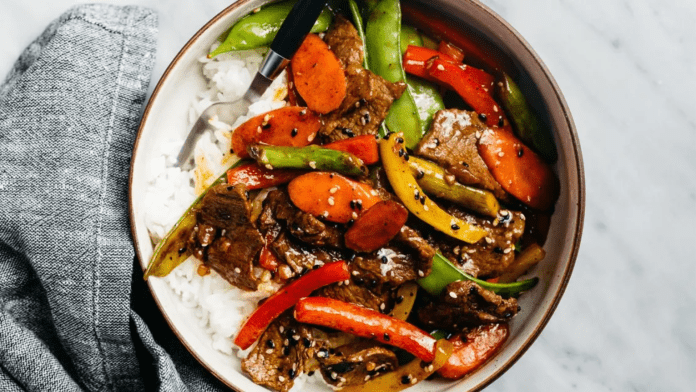If you’re a fitness enthusiast or athlete, you may have heard of the vertical diet. Developed by bodybuilder and powerlifter Stan Efferding, the vertical diet is a nutrition plan designed to help individuals achieve optimal performance, muscle growth, and overall health.
What Is the Vertical Diet?
The vertical diet is a nutrient-dense eating plan that emphasizes whole, minimally processed foods to support optimal health and performance. It’s called the “vertical” diet because it focuses on consuming a narrow range of high-quality foods that provide the most essential nutrients for your body to function properly.
The key principles of the vertical diet include:
Emphasizing high-quality protein sources
The vertical diet recommends consuming at least 1 gram of protein per pound of bodyweight from sources such as beef, eggs, and fish to support muscle growth and recovery.
Prioritizing micronutrient-dense food
The vertical diet emphasizes consuming a variety of fruits, vegetables, and whole grains to provide essential vitamins and minerals for overall health.
Managing gut health
The vertical diet recommends consuming foods that are easy to digest, such as white rice, to reduce digestive stress and improve nutrient absorption.
Limiting processed foods and refined sugars
The vertical diet recommends avoiding processed foods and limiting refined sugars to improve overall health and prevent chronic diseases.
Foods to Eat on a Vertical Diet:
- White rice
- Potatoes
- Sweet potatoes
- Carrots
- Spinach
- Fruits (bananas, oranges, and grapes)
- Salmon
- Whole eggs
- Greek yogurt
- Oatmeal
- Red meat (beef)
Foods to Avoid on a Vertical Diet:
- Processed foods
- Sugary drinks
- High-fiber foods
- High-fat foods
- Dairy (except for Greek yogurt)
- Legumes (except for hummus)
- Cruciferous vegetables (except for spinach)
- Nightshade vegetables (except for potatoes and carrots)
Benefits of the Vertical Diet
Proponents of the vertical diet claim that it offers several benefits, including:
Improved athletic performance
The vertical diet’s emphasis on high-quality protein sources and micronutrient-dense foods can support muscle growth, recovery, and overall athletic performance.
Enhanced gut health
By prioritizing easy-to-digest foods and avoiding foods that cause digestive stress, the vertical diet can improve gut health and reduce symptoms such as bloating and indigestion.
Better overall health
By emphasizing whole, minimally processed foods and limiting refined sugars, the vertical diet can reduce the risk of chronic diseases such as obesity, type 2 diabetes, and heart disease.
Potential Drawbacks of the Vertical Diet:
While the vertical diet offers several potential benefits, it may not be suitable for everyone. Some potential drawbacks include:
Limited food choices
The vertical diet’s narrow range of recommended foods may make it challenging to meet individual preferences and dietary restrictions.
Cost
High-quality protein sources such as beef and fish can be expensive, making the vertical diet less affordable for some individuals.
Micronutrient imbalances
The vertical diet’s focus on specific foods may lead to imbalances in certain micronutrients, such as calcium or vitamin D, if other nutrient-dense foods are not included.
How To Overcome Drawbacks of Vertical Diet?
Address potential nutrient deficiencies:
The vertical diet emphasizes a narrow range of high-quality foods, which may limit the variety of nutrients available. To address this, one can incorporate a wider variety of nutrient-dense foods, such as different types of fruits, vegetables, and whole grains. It may also be helpful to consult with a registered dietitian or healthcare professional to identify and address any potential nutrient deficiencies.
Adjust for individual dietary needs and preferences
While the vertical diet may work well for some people, it may not be the best fit for everyone. To address this, one can modify the diet to suit their individual dietary needs and preferences. For example, someone who prefers a vegetarian or vegan diet can still follow the principles of the vertical diet by incorporating plant-based sources of protein, such as tofu, tempeh, and legumes.
Be aware of potential digestive issues
Some people may experience digestive discomfort when following the vertical diet, particularly if they are not used to consuming high amounts of protein or certain types of carbohydrates. To address this, one can gradually increase the amount of protein and carbohydrates in their diet to allow the body to adjust. It may also be helpful to incorporate digestive aids, such as probiotics or digestive enzymes.
Monitor overall calorie intake
The vertical diet emphasizes high-quality foods, which can be more calorie-dense than processed foods. While this can be beneficial for athletes or those looking to gain weight, it may not be ideal for someone who is trying to lose weight. To address this, one can monitor their overall calorie intake and adjust as needed to achieve their goals.





